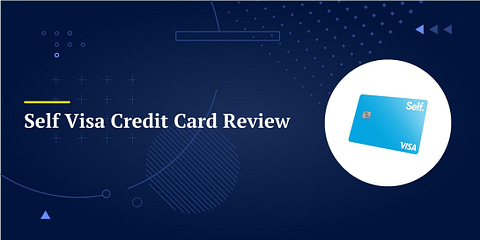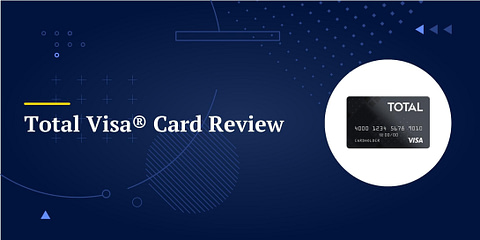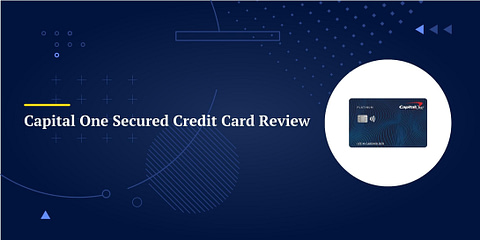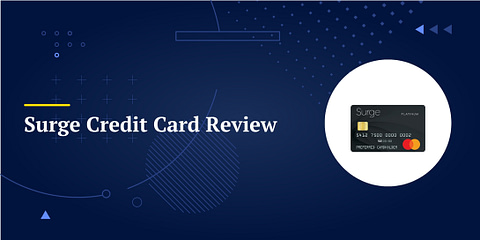Everyone needs to eat, which means people tend to spend a lot of money on food at restaurants and grocery stores. In 2021 the lowest-earning households spent an average of $4,875 on food, while the highest-earners spent an average of $13,973 on food[1].
With spending on food and groceries so high, the ability to earn rewards on your grocery purchases could result in big savings. Many credit card issuers offer specialized grocery credit cards offering high levels of cash back for grocery purchases.
We’ll break down the best credit card for groceries and help you choose the one that suits your needs.
Best Grocery Cards
We reviewed more than a dozen options to find the best grocery rewards credit cards for you. Important considerations included the cost of the card, how much you can earn, and whether the card offered a reason to use it for purchases at locations other than the grocery store.
From our research, we came up with this list of cards:
- Best for groceries and gas with no fee
American Express Blue Cash Everyday - Best for groceries and gas if you spend $3,200+ on groceries each year
American Express Blue Cash Preferred - Best for people who buy groceries at Target or Walmart
U.S. Bank Shopper Cash Rewards - Best for people who want flexibility in earning elevated rewards
Citi Custom Cash - Best for earning on food purchases at stores and at restaurants
Capital One SavorOne
1.
American Express Blue Cash Everyday
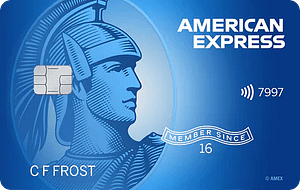
🏆 Best for groceries and gas with no fee
Great for people who want a gas and grocery card in one. However, the $6,000 limit on purchases may limit your annual rewards.
💵 Fees: None
🎁 Rewards Structure: 3% on groceries, gas, and online purchases (max $6,000 in purchases per year), 1% on everything else
⭐️ Bonus: $200 back after spending $2,000 in the first 6 months
👌 Perks: $84 in credits toward the Disney Bundle (Disney+, ESPN+, & Hulu), $180 in credits for Home Chef
2.
American Express Blue Cash Preferred
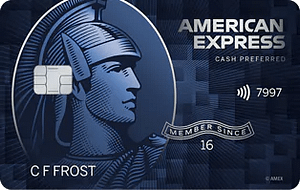
🏆 Best for groceries and gas if you spend $3,200+ on groceries each year
If you spend at least $3,200 per year on groceries, or spend a lot on gas and pass the $6,000 limit of the American Express Blue Cash Everyday, this card will out-earn the fee-free version.
💵 Fees: $0 for the first year, then $95
🎁 Rewards Structure: 6% on groceries (max $6,000 in purchases per year) and streaming, 3% on transit and gas, 1% on everything else
⭐️ Bonus: $250 back when you spend $3,000 in the first 6 months
👌 Perks: $84 in credits toward the Disney Bundle (Disney+, ESPN+, & Hulu), $120 in credits for Equinox
3.
U.S. Bank Shopper Cash Rewards

🏆 Best for people who buy groceries at Target or Walmart
This card lets you select stores for 6% rewards. It doesn’t have major grocery chains available but does let you choose Walmart and Target for your 6% earnings, making it great for people who often buy food at those stores.
💵 Fees: $0 for the first year, then $95
🎁 Rewards Structure: 6% on the first $1,500 spent at two chosen retailers per quarter, 5.5% on prepaid travel booked through the Rewards Travel Center, 3% on the first $1,500 spent on your choice of one everyday category per quarter, 1.5% on everything else
⭐️ Bonus: $250 back when you spend $2,000 in the first 120 days
👌 Perks: Flexible redemption options, enhance your earnings with a rewards shopping portal
4.
Citi Custom Cash
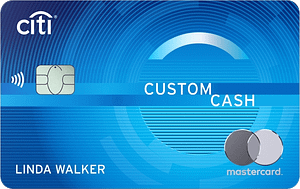
🏆 Best for people who want flexibility in earning elevated rewards
This card is highly flexible, adapting your earnings to where you spend the most, which can be great if your spending fluctuates. However, the $500 monthly spend limit for elevated rewards might not be high enough for some.
💵 Fees: None
🎁 Rewards Structure: 5% in your top spending category each month (max $500 spend per month), 1% on everything else
⭐️ Bonus: $200 back when you spend $1,500 in the first 6 months, 0% APR for 15 months
👌 Perks: Access to events through Citi Entertainment, Free FICO score
5.
Capital One SavorOne

🏆 Best for earning on food purchases at stores and at restaurants
This card is a great option for people who cook at home a lot but who also enjoy going out to eat, offering elevated rewards on in-home and restaurant meals.
💵 Fees: None
🎁 Rewards Structure: 3% on dining, entertainment, streaming, and grocery stores, 1% on everything else
⭐️ Bonus: $200 back when you spend $1000 in the first 3 months, 0% APR for 15 months
👌 Perks: No foreign transaction fee, Capital One Shopping automatically applies coupons when shopping online, discounts through Capital One Travel
American Express Blue Cash Everyday
➕ Pros
- No annual fee
- Credits for popular streaming services
➖ Cons
- Only earn elevated rewards on $6,000 in spending each year
- Not as widely accepted as Visa/Mastercard
The American Express Blue Cash Everyday card is a basic, fee-free cash-back card. You can use it at grocery stores and gas stations to earn 3% cash back.
The main drawback is that it limits this elevated earning level to the first $6,000 in spending each year, meaning you’ll only earn $180 before your earnings are reduced to 1%.
However, the card does come with the perks that American Express is known for, offering credits that can help you save on subscriptions to Disney+, Hulu, and ESPN+. It can also be a good way to get your foot in the door with American Express, which may make it easier to qualify if you choose to apply for one of the company’s premium charge cards in the future.
This is one of the best credit cards for groceries for single people and others whose spending on groceries is limited.
American Express Blue Cash Preferred
➕ Pros
- One of the highest cash-back rates for groceries
- Also a great card for gas and streaming services
➖ Cons
- $95 annual fee
- Not as widely accepted as Visa/Mastercard
The American Express Blue Cash Preferred is the premium version of the Blue Cash Everyday card, carrying a $95 annual fee. In exchange for the fee, you’ll get an extra 3% cash back on groceries and uncap the amount you can spend on gas to earn elevated rewards.
That means you need to spend a total of $3,166.67 on groceries, about $260 a month, to earn enough to cover the annual fee. If you spend a lot on groceries and gas, this card will help you earn more rewards, but isn’t worth the cost otherwise.
This is a good credit card for groceries for families that spend heavily on groceries and gas.
U.S. Bank Shopper Cash Rewards
➕ Pros
- Choose where you earn elevated rewards
- Bonus rewards at stores like Walmart/Target
➖ Cons
- No elevated rewards at traditional grocery stores
- $95 annual fee
The U.S. Bank Shopper Cash Rewards is a unique credit card in that it lets you choose where you earn higher cashback rates. You can select your two favorite retailers (from a list provided by U.S. Bank) each quarter and earn 6% back on the first $1,500 in combined spending at those stores.
While there aren’t large grocery chains available on the list, U.S. Bank does let you select Walmart or Target, which sell groceries in many locations. Many grocery cards don’t count purchases from these stores as grocery purchases, making this card one of the best ways to get elevated rewards at these big box stores.
The card also comes with some flexibility. You can choose a second retailer to earn 6% on and a category such as gas or bills to earn 3% on, making the card useful for more than just buying food.
This is one of the best credit cards for groceries if you’re a regular shopper at stores available on the card’s elevated rewards list.
Citi Custom Cash
➕ Pros
- Earn 5% on your highest spend category automatically
- 0% APR intro period
➖ Cons
- Bonus rewards are limited to $500 in spending each month
- Earn only 1% on all other purchases
The Citi Custom Cash card is one of the easiest rewards cards to use. You’ll earn bonus rewards on whatever category you spend the most on each month. There’s no need to activate bonus offers or pre-select a category. As a bonus, you can earn these elevated rewards on things other than groceries if you happen not to buy many groceries in one month.
However, the card doesn’t offer elevated rewards on anything but your top spending category. It also limits you to earn $25 per month on your top-spending category before it cuts your rewards rate to a measly 1%.
This card is one of the best credit cards for groceries for people whose spending patterns change frequently and who don’t spend huge amounts each month.
Capital One SavorOne
➕ Pros
- Earn elevated rewards on all types of food
- 0% APR intro period
➖ Cons
- Requires excellent credit
The SavorOne is, overall, a fantastic card offering 3% cash back on restaurants and groceries. That makes it ideal for people who like to cook but who also enjoy going out to eat. The 3% back on entertainment and streaming is a great perk that makes this card even more useful.
Cardholders can also take advantage of the card’s intro APR period, financing a purchase or transferring a balance and paying it off over time.
The primary drawback of the card is that it requires excellent credit. If you’re just starting to build credit or have damaged your credit score, you might struggle to qualify.
If you have excellent credit and you spend on both restaurants and groceries, this will be one of your best credit cards for groceries.
Compare Cards Table for Best Credit Cards for Groceries
| Card | Fees | Rewards | Bonus | Perks |
|---|---|---|---|---|
| American Express Blue Cash Everyday | None | 3% on groceries, gas, and online purchases (max $6,000 in purchases per year) 1% on everything else | $200 back after spending $2,000 in the first 6 months | $84 in credits toward the Disney Bundle (Disney+, ESPN+, & Hulu) $180 in credits for Home Chef |
| American Express Blue Cash Preferred | $0, then $95 per year | 6% on groceries (max $6,000 in purchases per year) and streaming 3% on transit and gas 1% on everything else | $250 back when you spend $3,000 in the first 6 months | $84 in credits toward the Disney Bundle (Disney+, ESPN+, & Hulu) $120 in credits for Equinox |
| U.S. Bank Shopper Cash Rewards | $0, then | 6% on the first $1,500 spent at two chosen retailers per quarter5.5% on prepaid travel booked through the Rewards Travel Center3% on the first $1,500 spent on your choice of one everyday category per quarter 1.5% on everything else | $250 back when you spend $2,000 in the first 120 days | Flexible redemption options Enhance your earnings with a rewards shopping portal |
| Citi Custom Cash | None | 5% in your top spending category each month (max $500 spend per month) 1% on everything else | $200 back when you spend $1,500 in the first 6 months 0% APR for 15 months | Access to events through Citi Entertainment |
| Capital One SavorOne | None | 3% on dining, entertainment, streaming, and grocery stores 1% on everything else | $200 back when you spend $1,000 in the first 3 months 0% APR for 15 months | No foreign transaction fee Capital One Shopping automatically applies coupons when shopping online Discounts through Capital One Travel |
How to Choose Your Grocery Card
Picking the right grocery card involves a few steps.
First, consider your credit score. Try to find a card that approves people with similar credit profiles.
Next, review your grocery spending. To choose the card that best meets your needs, you’ll need a good handle on how much you spend on groceries and where you spend it.
Next, think about the rewards rates. The higher the rate, the more rewards you’ll earn. However, you also need to think about additional categories where the card offers bonus rewards and determine if they’re useful to you.
If there’s an annual fee, compare the card to no-fee cards and think about your spending. Only go with a card that has a fee if the additional rewards you can earn exceed the fee plus what you’d earn from the rewards on a no-fee card.
💡 Knowing how to choose a rewards credit card will help you earn rewards that are useful to you and maximize your gains. Learn more about how to choose the best rewards card for your needs.
Is it Worth Getting a Credit Card Just for Groceries?
Should you get a credit card just for groceries? That depends on your spending habits. Some people spend a lot on groceries and rarely eat out. Others never cook and get takeout or a restaurant meal almost every day.
For many people, groceries are a top spending category, so it’s worth getting one. That’s particularly true for families, which tend to spend heavily and regularly on groceries.
Many cards on this list have multiple uses, so if you want to avoid crowding your wallet, you might want to consider a card that you could use for more than just groceries.









